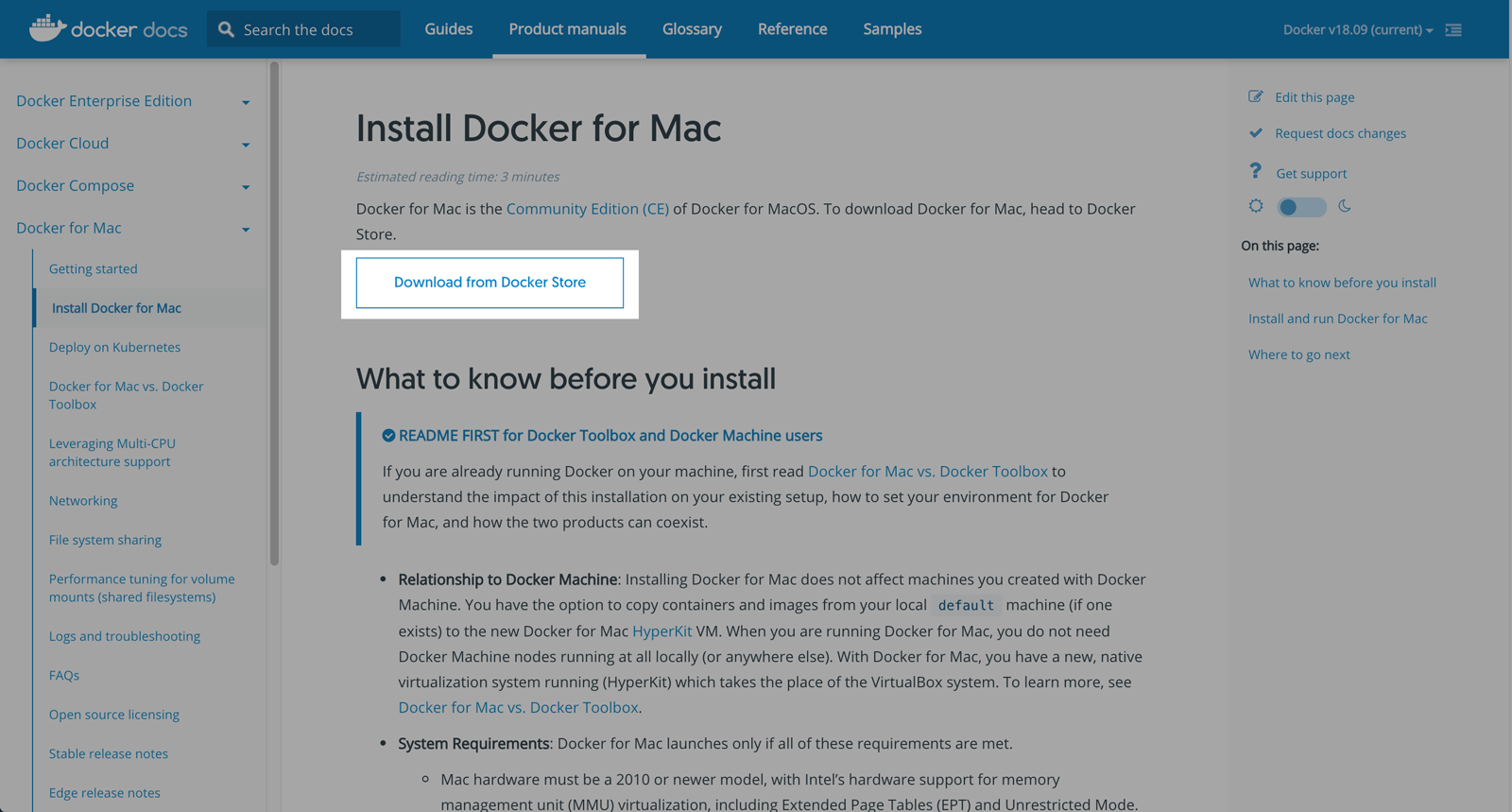
#DOCKER DMG FOR MAC#
Memory - By default, Docker for Mac is set to use 2 GB runtime memory, allocated from the total available memory on your Mac. You can increase processing power for the app by setting this to a higher number, or lower it to have Docker for Mac use fewer computing resources.

If you disable the check for updates, you can still find out about updates manually by choosing -> Check for UpdatesĬheck Exclude VM from Time Machine backups to prevent Time Machine from backing up the Docker for Mac virtual machine.ĬPUs - By default, Docker for Mac is set to use 2 processors.
#DOCKER DMG INSTALL#
If an update is found, click OK to accept and install it (or cancel to keep the current version). Uncheck the login autostart option if you don’t want Docker to start when you open your session.ĭocker for Mac is set to check for updates automatically and notify you when an update is available. For example, docker rmi nginx.ĭocker for Mac is set to automatically start when you log in. To remove an image you no longer need, use docker rmi |. You might want to keep some images around so that you don’t have to pull them again from Docker Hub.

You can list local images with docker images. This will remove the container, but not the nginx image. To stop and remove the running container with a single command, type: docker rm -f webserver. If you want to stop the webserver, type: docker stop webserver and start it again with docker start webserver. The nginx webserver will continue to run in the container on that port until you stop and/or remove the container. CONTAINER ID IMAGE COMMAND CREATED STATUS PORTS NAMESĥ6f433965490 nginx "nginx -g 'daemon off" About a minute ago Up About a minute 0.0.0.0:80->80/tcp, 443/tcp webserver Run docker ps while your web server is running to see details on the webserver container. Now, ports are exposed on the private IP addresses of the VM and forwarded to localhost with no other host name set. Note: Early beta releases used docker as the hostname to build the URL. (Since you specified the default HTTP port, it isn’t necessary to append :80 at the end of the URL.) In a web browser, go to to bring up the home page. If the image is not found locally, Docker will pull it from Docker Hub. docker run -d -p 80:80 -name webserver nginx Some good commands to try are docker version to check that you have the latest release installed, and docker ps and docker run hello-world to verify that Docker is running.įor something more adventurous, start a Dockerized web server. Open a command-line terminal, and run some Docker commands to verify that Docker is working as expected. What the install includes: The installation provides Docker Engine, Docker CLI client, Docker Compose, and Docker Machine. Note: If your system does not satisfy these requirements, you can install Docker Toolbox, which uses Oracle Virtual Box instead of HyperKit. VirtualBox prior to version 4.3.30 must NOT be installed (it is incompatible with Docker for Mac)

Mac must be a 2010 or newer model, with Intel’s hardware support for memory management unit (MMU) virtualization i.e., Extended Page Tables (EPT) System Requirements: Docker for Mac will launch only if all these requirements are met. You’ll get the option to copy containers and images from your local default machine (if one exists) to the new Docker for Mac HyperKit VM. Relationship to Docker Machine: Installing Docker for Mac does not affect machines you created with Docker Machine.

#DOCKER DMG HOW TO#
Docker Toolbox to understand the impact of this installation on your existing setup, how to set your environment for Docker for Mac, and how the two products can coexist. README FIRST for Docker Toolbox and Docker Machine users: If you are already running Docker on your machine, first read Docker for Mac vs.


 0 kommentar(er)
0 kommentar(er)
